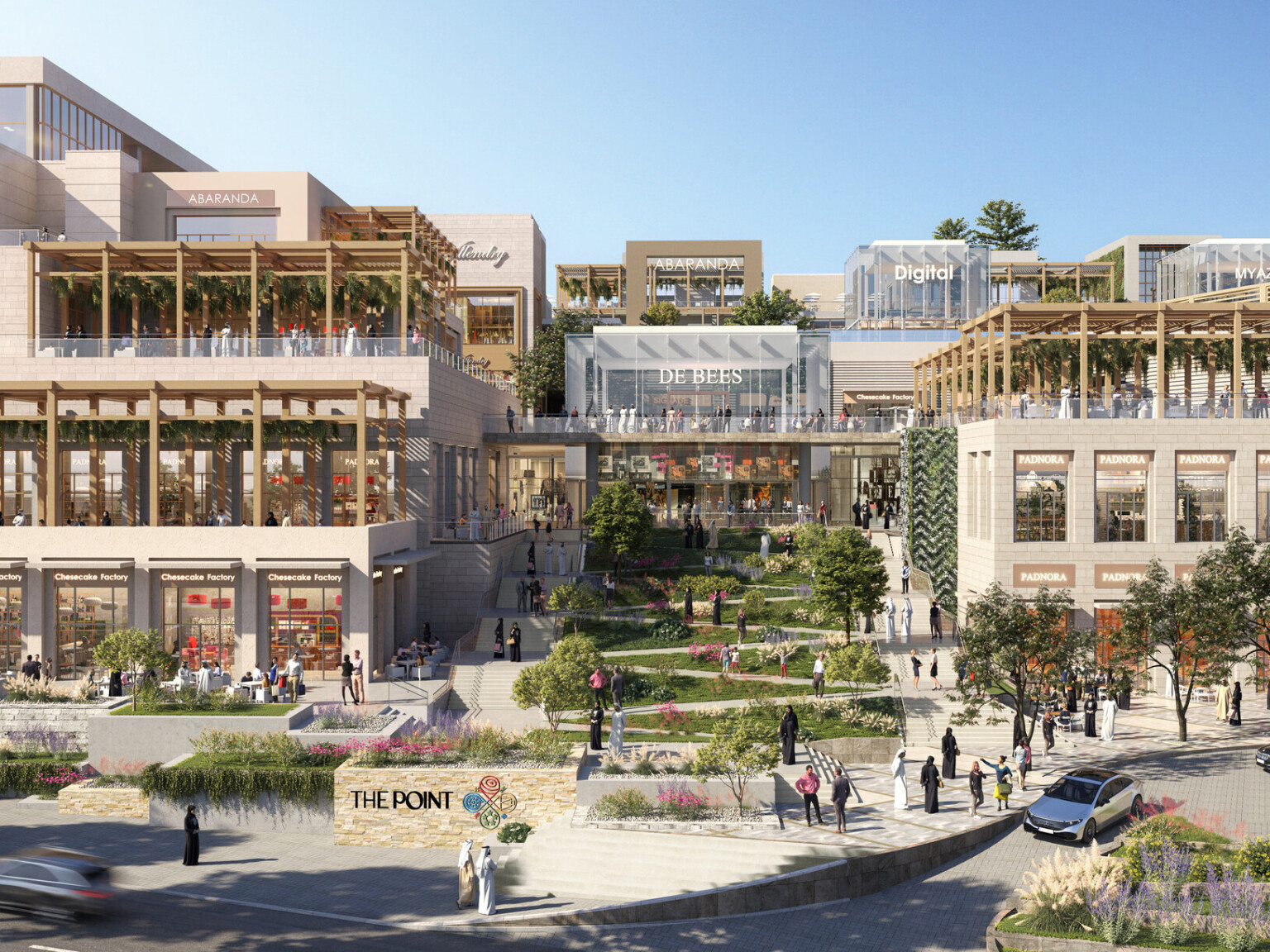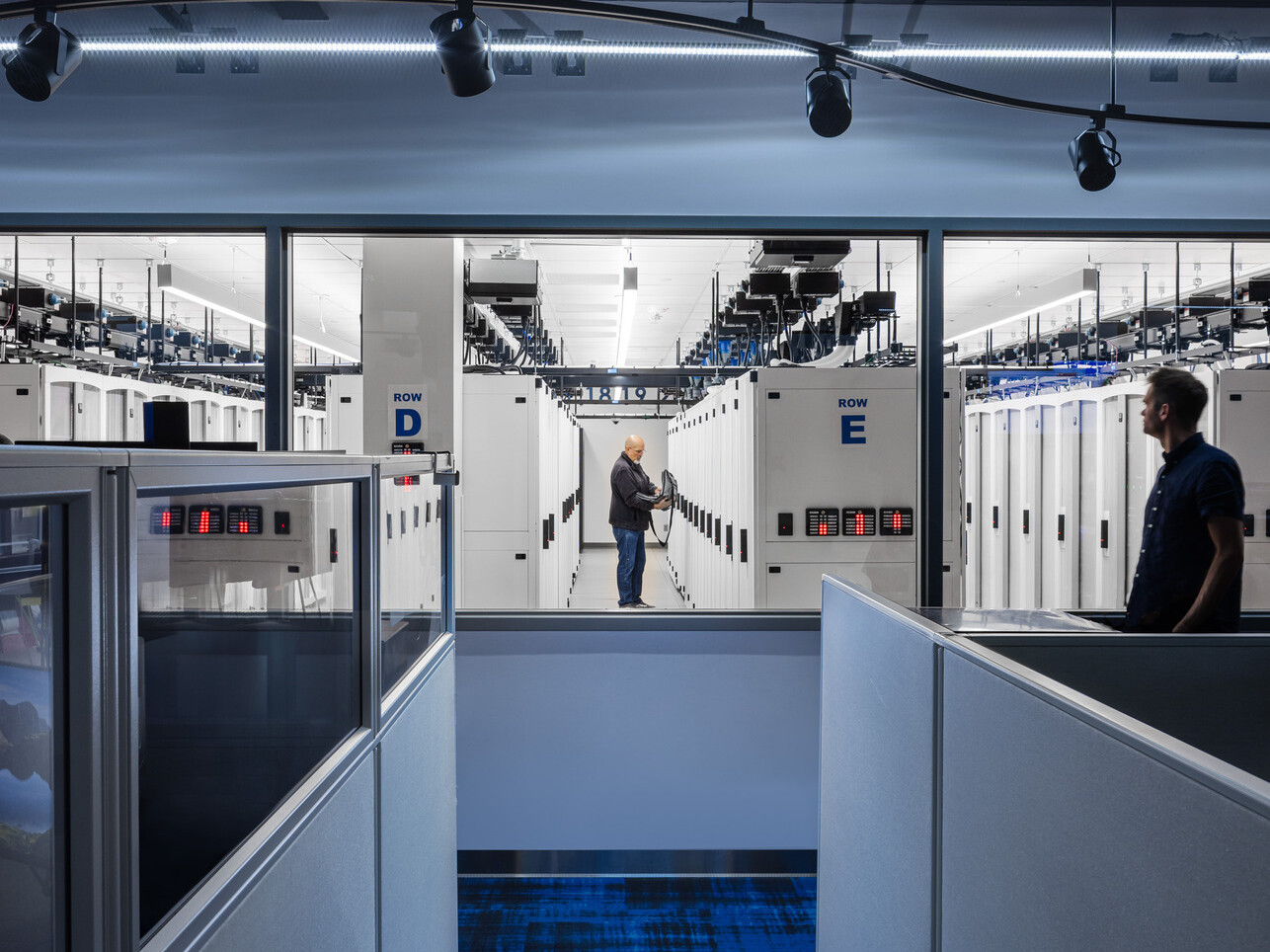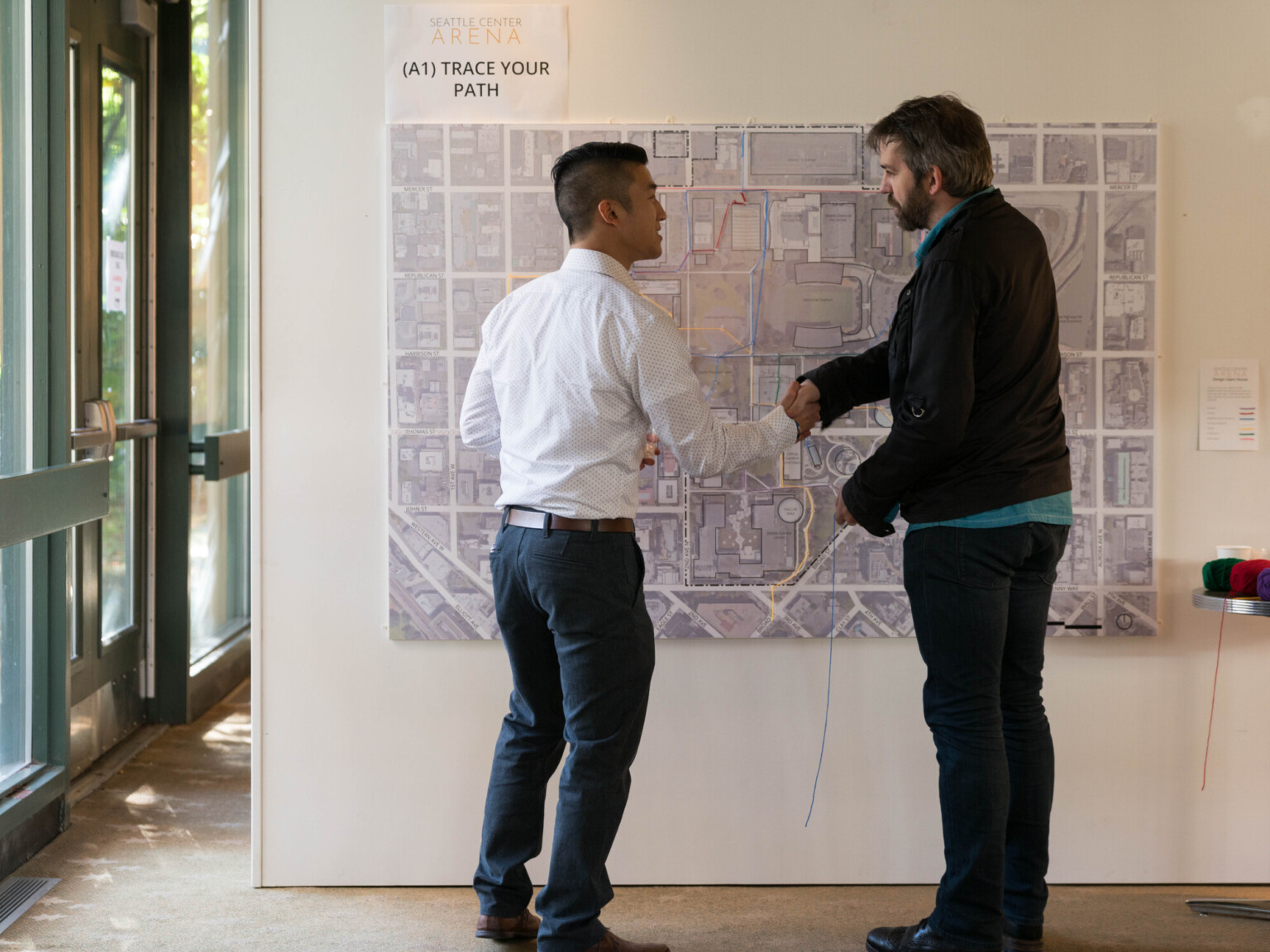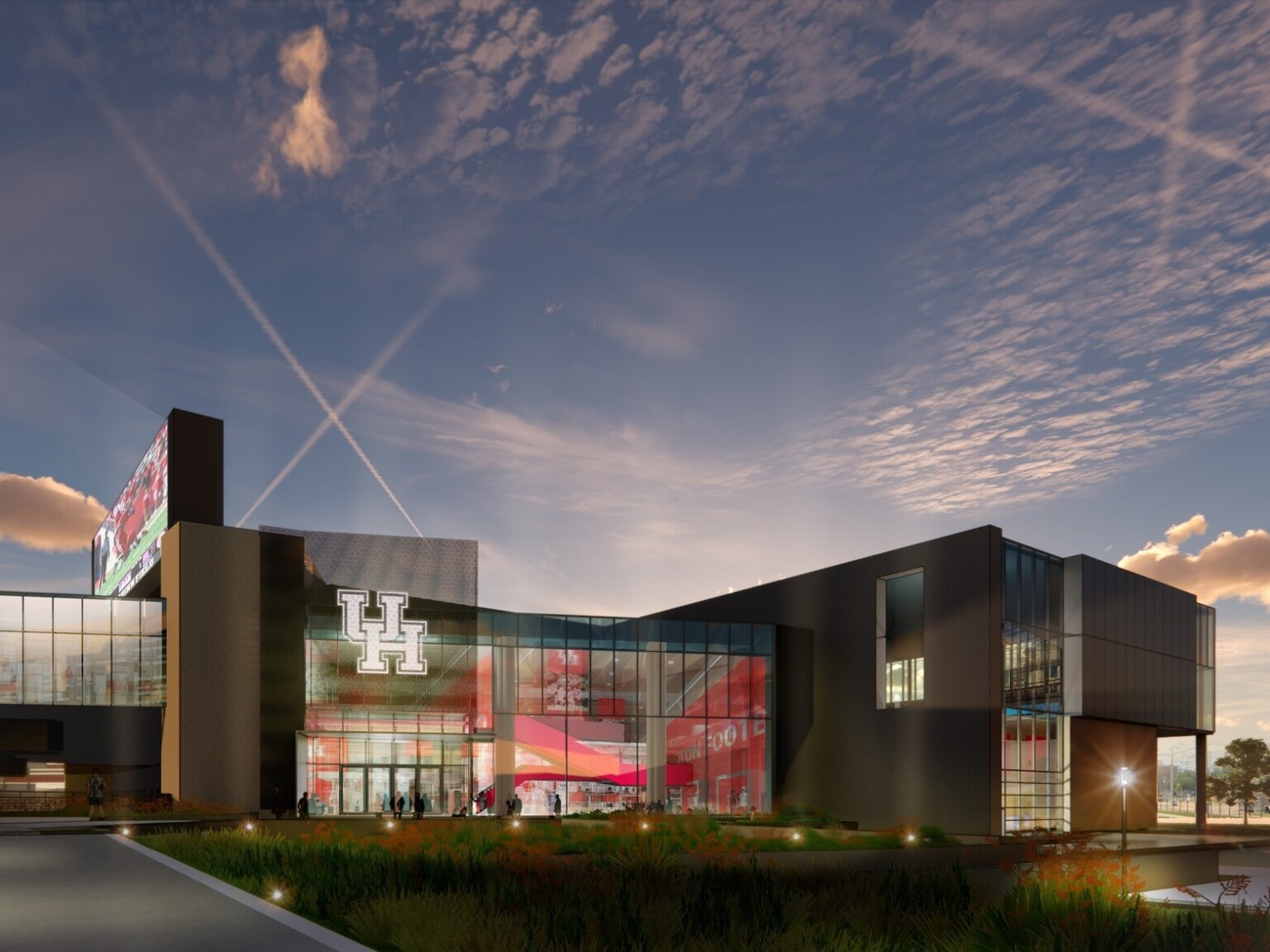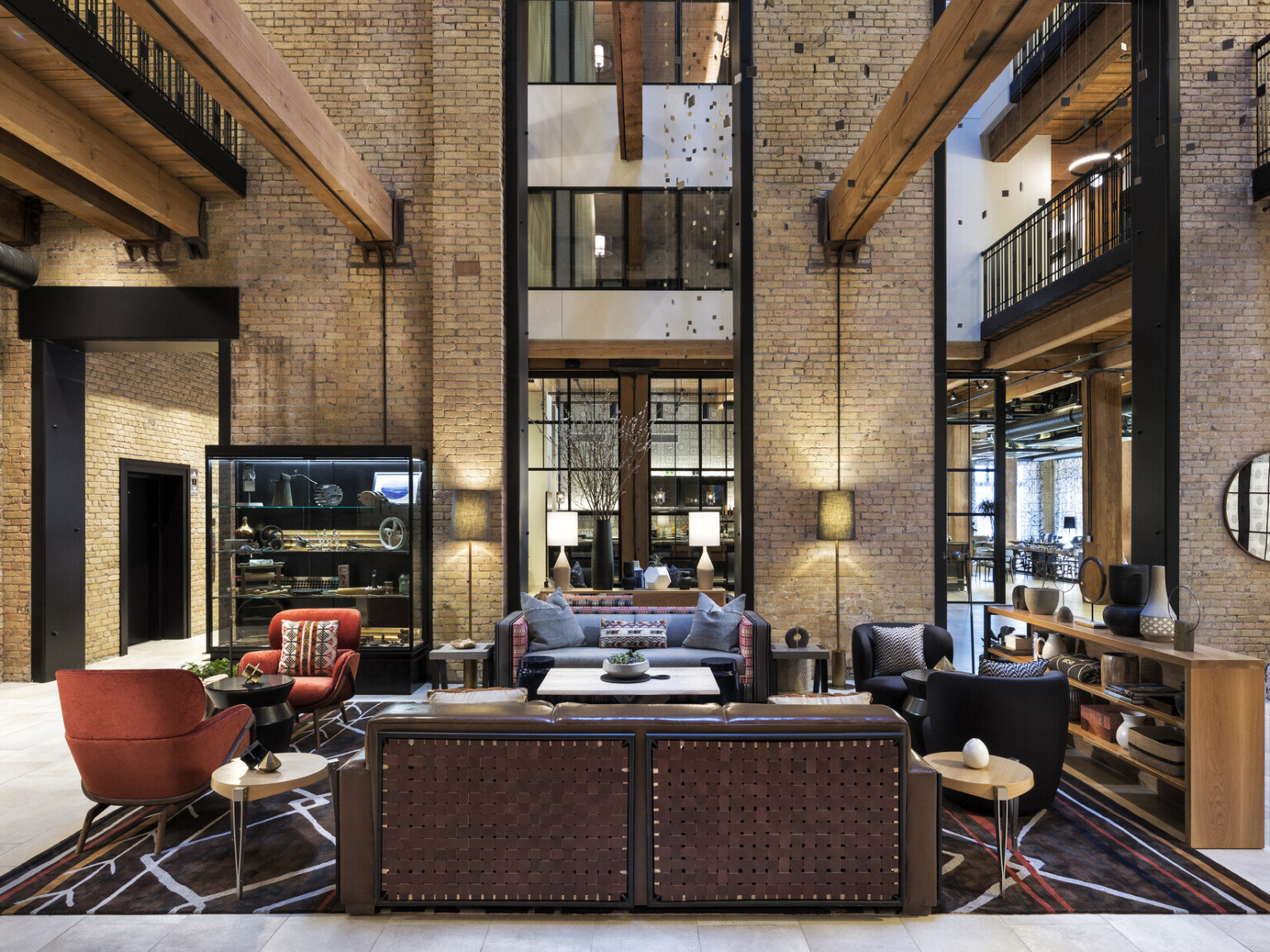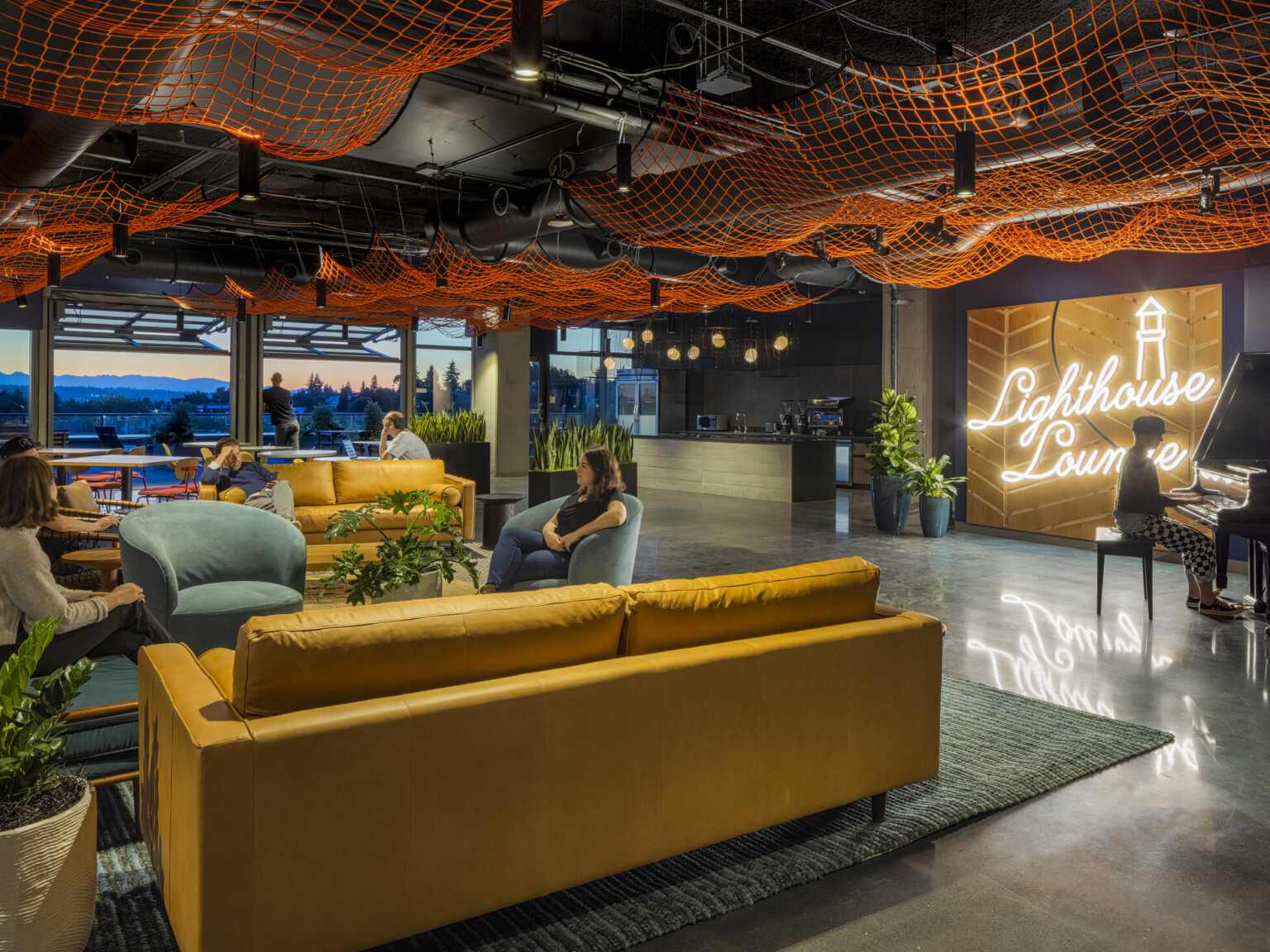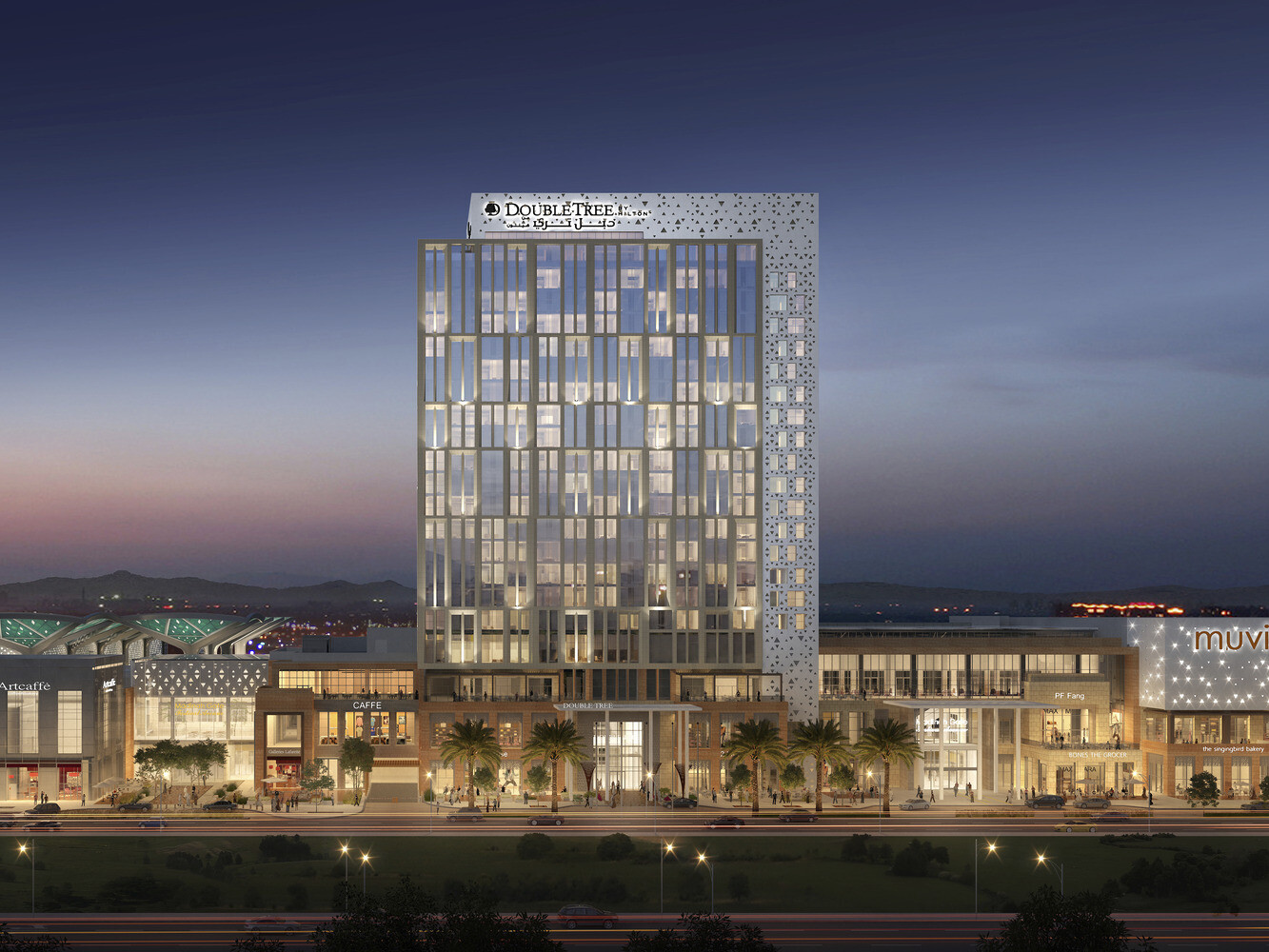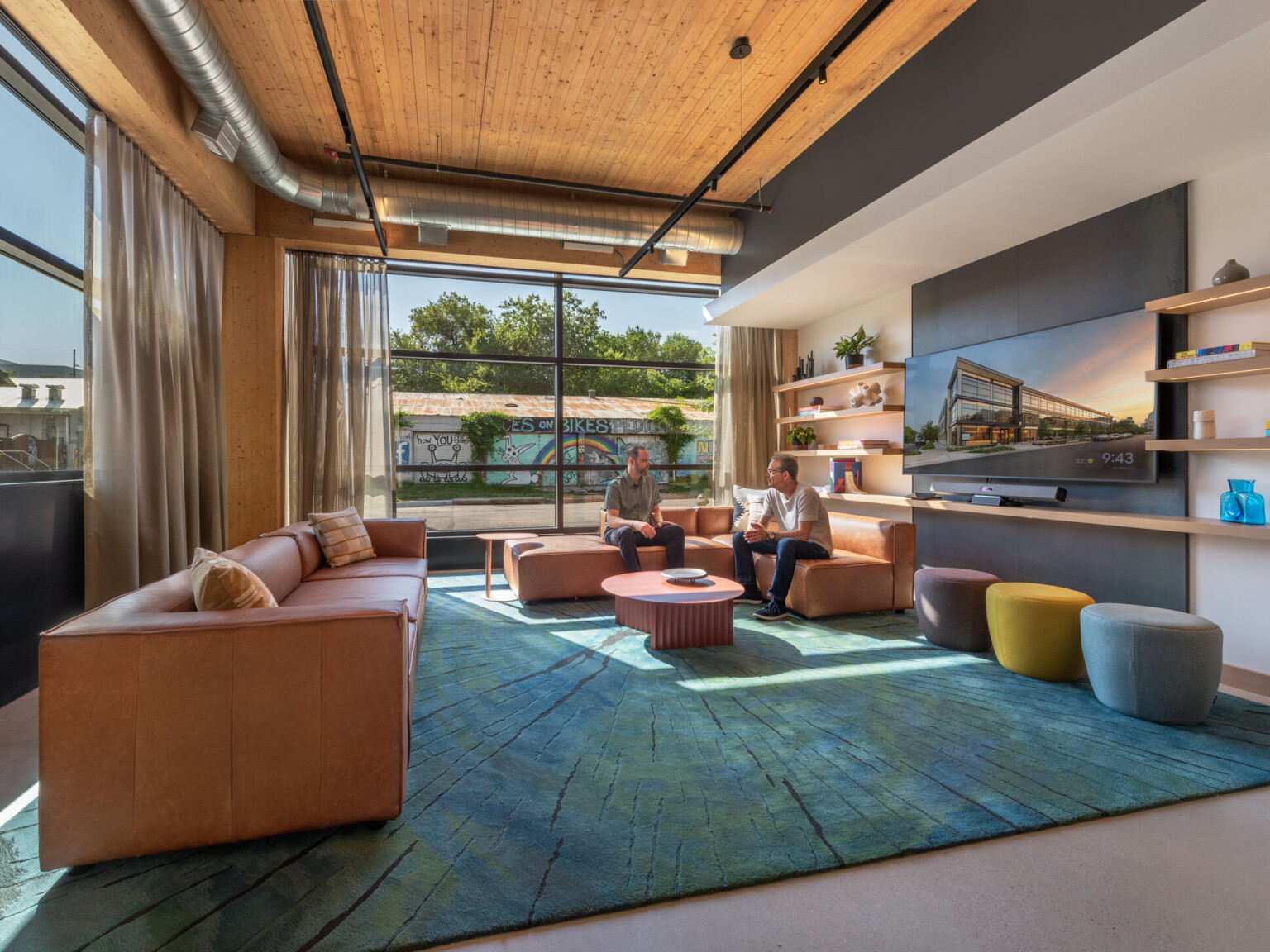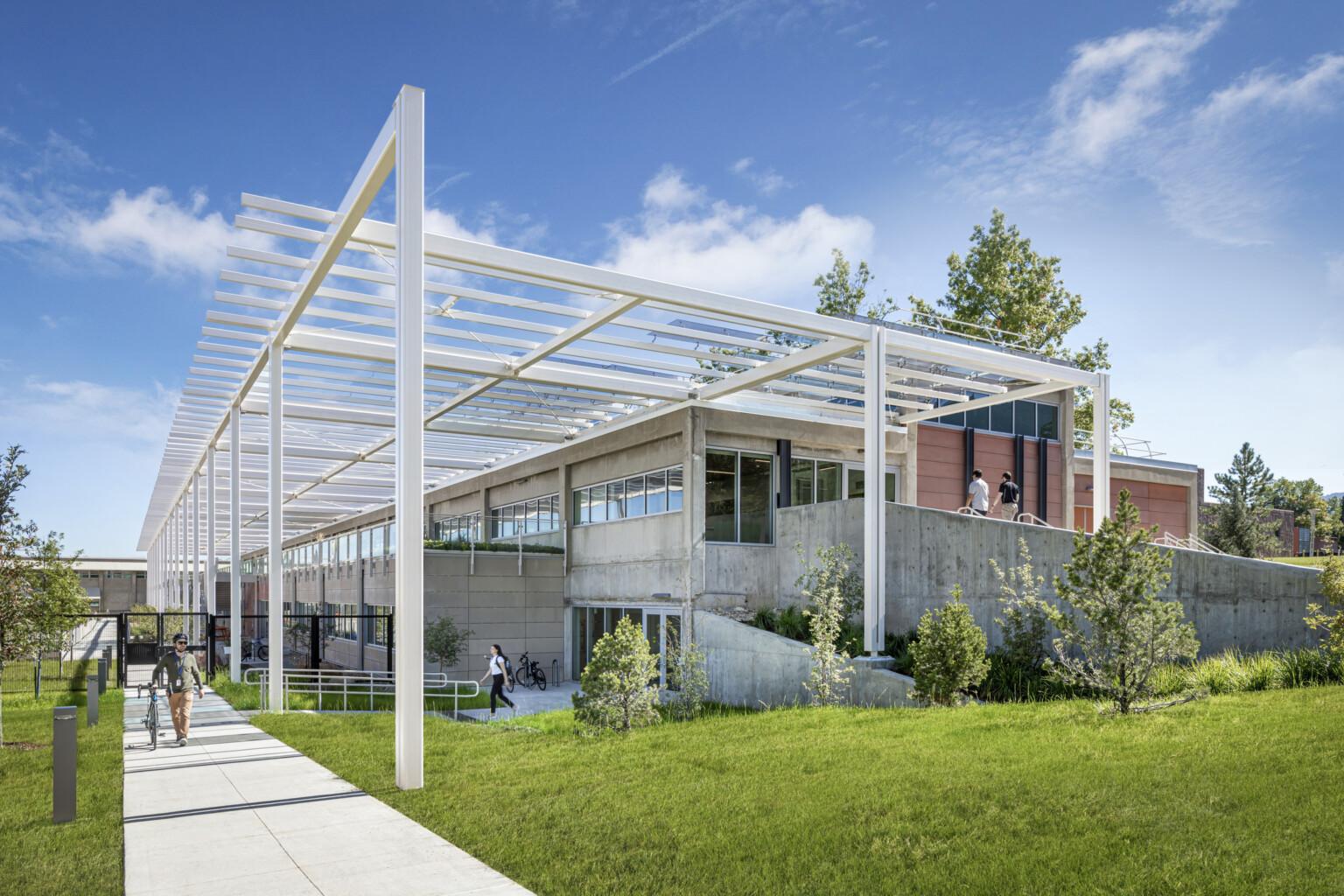
The Leading Edge of Sustainable Design
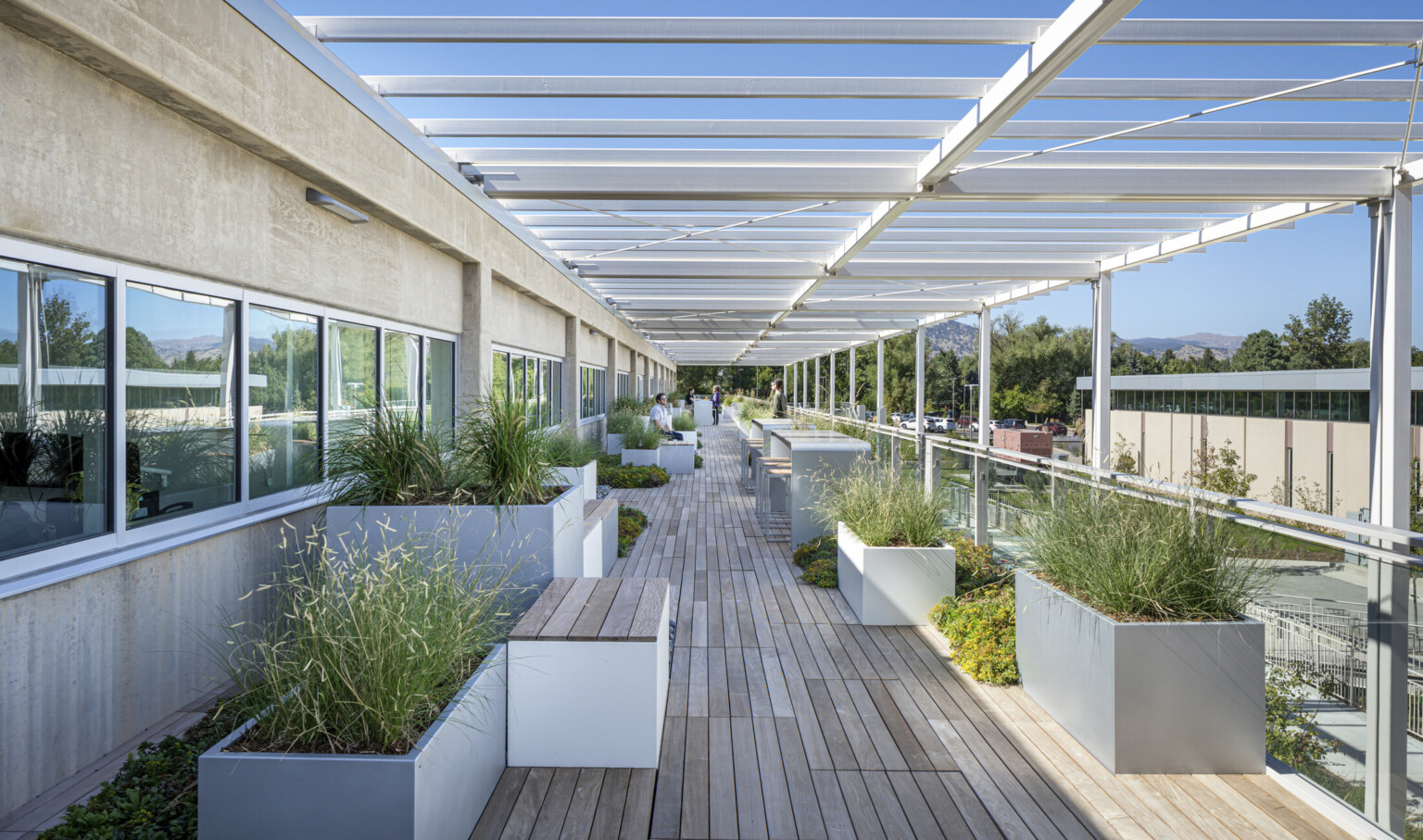
But it’s also the natural way of things for those who see the need to keep a leading edge to lead the edge out just a bit further. Hence, we designed Building 1, Wing 5 to meet LEED Gold Certification, a step above the required Silver Certification. The sort of sustainability we desperately need won’t happen without pushing beyond baseline expectations.
The Physical Measurement Laboratory
As part of the U.S. Department of Commerce, the scientists working in Building 1, Wing 5 conduct world-class research on measurement science, standards, and technology – work that is vital to our economic security and overall quality of life. Yet the building itself is one of the nation’s oldest physical science laboratories, in place since the initial 1954 construction of the campus.
The structural support of our renovation, to speak metaphorically, was to instill modern design standards and meet the performance level required for their research. But the facade of our work, again metaphorically, was to make the building sustainable and environmentally friendly.
As a project that exists in an increasingly popular hybrid of workplace and federal design, the big picture results of our design were 16 new energy-efficient labs and flexible spaces for work and socialization. This included a new terrace and renovated courtyard, offering opportunities for collaboration and restoration outside of the labs. As for the more traditional workplace environment, we added private offices, meeting rooms, and upgraded amenities to the main floor with expansive windows that provide natural light and navigation when moving through the space.
All in all, the building had to balance rigorous discipline and chance interaction – a squaring of opposites that design itself is all too familiar with. Facilitating intense research couldn’t become a hindrance to human wellness.
NIST: Nice Implementations of Sustainable Traits
And it’s the idea of wellness that brings us to Building 1, Wing 5’s sustainable design. In a claim that will surprise absolutely no one – yet remains all too overlooked – it’s generally true that human wellness is indistinguishable from environmental wellness. There are essentially two categories that qualify Building 1, Wing 5 for LEED Gold Certification.
The first is water conservation. Very often, it’s possible to reduce the amount of potable water – or, more simply, water that’s up to drinking standards – being used indoors. In the case of our renovation, we were able to reduce indoor potable water usage by over 40% using plumbing fixtures with a WaterSense label, which the EPA uses to mark products that “are backed by independent, third-party certification and meet EPA’s specifications for water efficiency and performance.” As for outdoor potable water use, our strategy involved reducing human interference with the environment by selecting drought-resistant wildlife that’s native to Boulder. Our plant selection also attracts native bird and insect species; reduces the heat island effect, or higher temperatures occurring around concentrations of heat-absorbing materials; and it minimizes stormwater runoff, which the EPA says can “pick up and deposit harmful pollutants like trash and chemicals into streams, lakes, and groundwater.”
The second category is energy performance, which we were able to reduce by 20%. What’s important about that number is that we were able to achieve it without using solar panels to convert sunlight into energy, one of the most common ways to save energy. Our design focused instead on working with – instead of against – natural processes for heating and cooling a space. This includes the use of abundant insulation, triple-pane glazing on the windows, emphasizing exterior overhangs, and a roof that reflects more sunlight than it gathers.
All in All
Of course, sustainability begins with a sustainable mindset – one that’s future-oriented. For that reason, our renovation is one of many NIST will perform; and perhaps the crucial feature of those renovations will be how well they keep an eye out for future innovations. This is to say that, soon, a 40% reduction in water waste and a 20% reduction in energy will be the new expectation. And when that day comes, we plan to be on the leading edge, leading the edge out just a little bit further.
Learn more about our sustainability efforts and the Thomas Jefferson Solar Canopy at Mount Rushmore.
To receive ideas like this directly to your inbox, subscribe to our email list.

